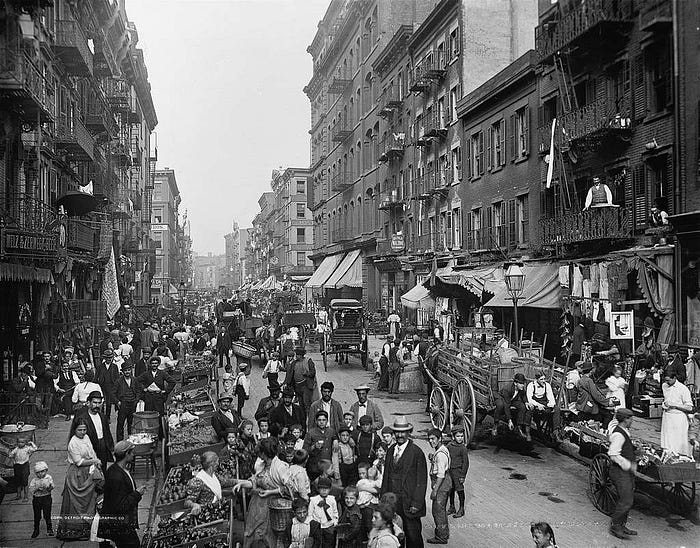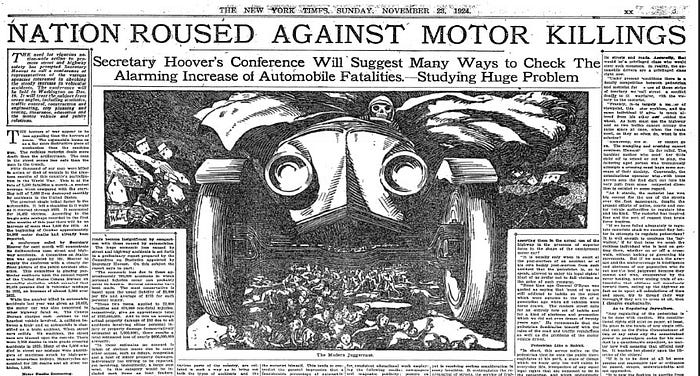This is the story of how, in the 1920s, the auto industry chased people off the streets of America — by waging a brilliant psychological campaign.
They convinced the public that if you got run over by a car, it was your fault.
Pedestrians were to blame. People didn’t belong in the streets; cars did.
When pedestrians ruled the roads
It’s one of the most remarkable (and successful) projects to shift public opinion I’ve ever read about. Indeed, the car companies managed to effect a 180-degree turnaround.
That’s because before the car came along, the public held precisely the opposite view: People belonged in the streets, and automobiles were interlopers.
If you travelled in time back to a big American city in, say, 1905 — just before the boom in car ownership — you’d see roadways utterly teeming with people. Vendors would stand in the street, selling food or goods. Couples would stroll along, and everywhere would be groups of children racing around, playing games. If a pedestrian were heading to a destination across town, they’d cross a street wherever and whenever they felt like it.
“They’d stride right into the street, casting little more than a glance around them,” as Peter D. Norton, a historian and author of Fighting Traffic: The Dawn of the Motor Age in the American City, told me when I interviewed him for Smithsonian a few years ago. “Boys of 10, 12 or 14 would be selling newspapers, delivering telegrams and running errands.”
Here’s what New York’s Mulberry Street looked like in 1900 …

Not a car in sight! And tons of people.
Those streets were pretty safe for pedestrians. Sure, there were horse-drawn carriages and streetcars, but those moved comparatively slowly (and predictably, in the case of streetcars, on tracks). You had time to get out of the way.
But once private citizens began piloting cars down city streets, things got dangerous quickly.
Cars were heavy and a lot faster; the Model T, released in 1908, could hit 45 MPH. Few rules or protocols for the use of cars existed, and pedestrians weren’t looking out for them. Why would they? Pedestrians had ruled the streets, worldwide, for centuries.
So the death toll was astounding. In cities of more than 25,000 people, cars were a leading cause of death by 1925. In the 1920s alone, car drivers killed over 200,000 Americans.
When cars and car drivers == ruthless, selfish killers
The public was furious. They saw cars, and car drivers, as violent interlopers on streets that rightfully belonged to pedestrians. Newspapers ran headlines like this, with graphics portraying cars as the grim reaper …

